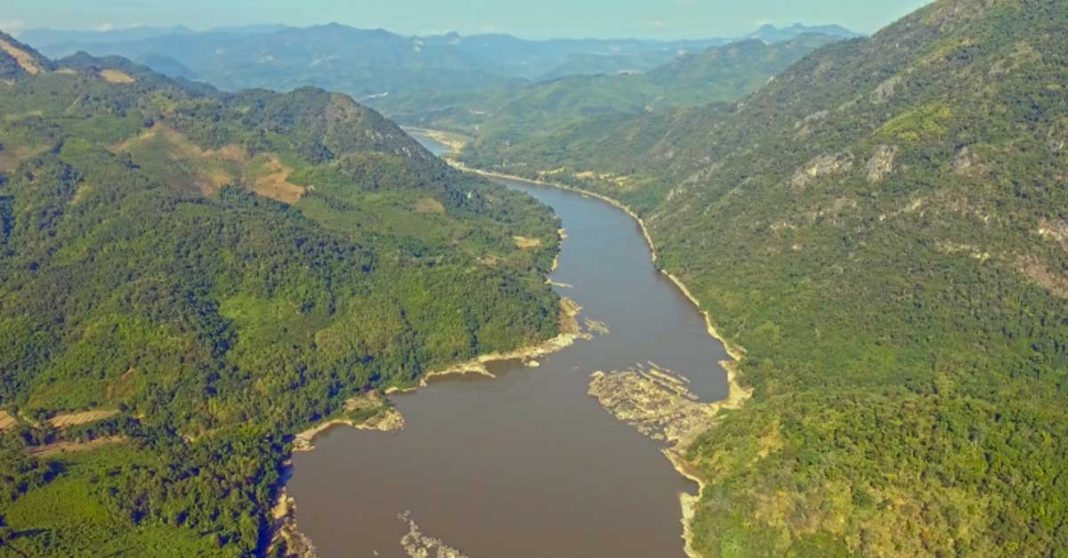The Sanakham hydropower project developer and the Lao government should widen the project’s impact assessment and propose additional measures to mitigate potential adverse impacts from the 684-megawatt Sanakham dam, according to a public regional forum organized by the Mekong River Commission (MRC).
At the 10th MRC Regional Stakeholder Forum held yesterday in Pakse, Siem Reap, Bangkok, and Hanoi, as well as online, to consult stakeholders on the Sanakham project, some 200 attendees voiced their appreciation of the MRC for making submitted documents available in a timely and open manner, and for making many available in the riparian languages.
The participants also raised their concerns about the project and made several recommendations to make prior consultation more meaningful and to ensure potential negative project impacts are addressed.
For example, the participants suggested that the Lao government and the project developer, Datang (Lao) Sanakham Hydropower Co. Ltd, consider broadening its impact assessment to encompass different environmental and social dimensions, and to consider other dams and development projects to provide a more comprehensive overview of its possible impacts.

They also maintained that the mitigation measures currently proposed by the developer were insufficient, suggesting that additional measures, including compensation mechanisms to cope with changes in livelihoods, be provided using up-to-date data and recent studies.
As drought in 2019 and 2020 extended the dry season and affected Cambodia’s Tonle Sap reverse flow and fisheries production, the participants asked the MRC Member Countries to look into opportunities to release water from hydropower storage on the tributaries in the coming years. This would allow more sediments to flow, support downstream fish migration, and maintain the ecological balance in the Mekong mainstream.
The forum also suggested that the MRC need to consider ways to ensure the availability of more complete and up-to-date documents and data from future projects well before the prior consultation process begins. They said this would allow for a more meaningful review of the submitted documents.
The MRC, they added, should explore avenues to improve the information-sharing mechanisms and uptake of stakeholders’ comments into the prior consultation process and beyond. They said the MRC should inform stakeholders more clearly about which suggestions were taken on board and which were not and why.
Vice Minister of the Lao Ministry of Natural Resources and Environment, Bounkham Vorachit, said in her opening remarks that her country welcomed stakeholders’ comments and suggestions on measures to improve the project.
“We will spare no effort to ensure that serious issues are addressed before we proceed to
implement the project,” she remarked at the virtual forum, which was attended by participants from potentially affected communities, civil society organizations, academics, the private sector, development partners, and the governments of Cambodia, Lao PDR, Thailand and Vietnam.
The Sanakham dam, estimated to cost $2.073 billion, is the sixth project to be submitted for the MRC six-month prior consultation process. The proposed location is between Xayaburi and Vientiane provinces in Lao PDR, about 155 km north of Vientiane, the capital of Lao PDR, and approximately 2 km upstream of the Thai-Lao border in Loei Province.
MRC Secretariat Chief Executive Officer, An Pich Hatda, said prior consultation for the Sanakham dam would require a shift in emphasis due to the dam’s proposed location and characteristics.
“Strong mitigation measures for the Sanakham project are more important than ever,” Dr Hatda said, adding that construction activities and impacts that are usually only local could have transboundary effects.
He added that the MRC Member Countries had just agreed to explore a regional funding
mechanism to support livelihoods and ecosystem restoration projects throughout the Lower
Mekong Basin.



